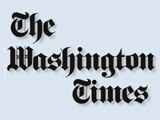|
|
TODAY.AZ / Politics
The Washington Times: "Iran's military plans for invasion by U.S."
31 May 2006 [10:37] - TODAY.AZ

Iran's military planners are acutely aware that a military confrontation with technologically more advanced U.S. armed forces would be rapid and multifronted, unlike the static and slow-paced 1980-88 war with Saddam Hussein's Iraq.
Therefore, a series of war games have been carried out since late last year to test the army's readiness.
In December, more than 15,000 members of the regular armed forces participated in an exercise in northwestern Iran's strategically sensitive Azerbaijan border provinces that focused on irregular warfare carried out by highly mobile army units, according to the official MENA news agency.
A second exercise was conducted in the majority-Arab province of Khuzestan in September, according to the Iranian press, aimed at quelling insurgencies in areas subject to ethnic unrest and prone to foreign influence.
Involving a reported 100,000 troops, the exercise provided an example of how the Islamic Republic would respond to further disturbances in the strategic, oil-rich province that has been the scene of a year-old terrorist bombing campaign.
Iranian officials, including the interior and the intelligence ministers, as well as several religious leaders, have repeatedly blamed the disturbances on British forces occupying nearby southern Iraq.
At the same time, a European military attache in Tehran told The Washington Times that the Revolutionary Guard is moving away from a joint command with the ordinary army and taking a more prominent role in controlling Iran's often porous borders, even as it makes each of Iran's border provinces autonomous in the event of war.
In Washington, State Department spokesman Sean McCormack said he was not aware of any improvement of Iran's military capabilities, but noted that if such developments are taking place, people in the U.S. government are watching.
Defense analysts said it makes sense for the Iranian regime to give the impression of upgrading and modernizing its military, but they questioned the need to prepare for guerrilla-type warfare because a full-blown U.S. invasion is not likely.
"It's probably a smart policy for the Iranian leadership to get this out in order to convince the U.S. military that they are ready for guerrilla resistance from the get-go," said Michael O'Hanlon, senior fellow in foreign policy studies at the Brookings Institution.
"They know they can't repulse our air strikes -- we can strike from a long distance making it hard to shoot us down -- so the only thing they can do in that case is move assets to secret locations," he said.
Anthony Cordesman of the Center for Strategic and International Studies dismissed the reports of the Iranian military acquiring new capabilities, saying it has been training in asymmetric tactics for years.
Iranian war planners expect that the first step taken by an invading force would be to occupy the oil-rich Khuzestan region, secure the sensitive Strait of Hormuz and cut off the Iranian military's oil supply.
Foreign diplomats who monitor Iran's army say that Iran's leadership has acknowledged it stands little chance of defeating U.S. armed forces with conventional military doctrine.
The shift in focus to guerrilla warfare against an occupying army in the aftermath of a successful invasion mirrors developments in Iraq, where a triumphant U.S. military campaign has been followed by three years of slow, indecisive struggle with insurgent and terrorist forces.
The Iranian preparations come as the United States refuses to rule out military action over Iran's suspect nuclear programs.
"Iran is a troublemaker in the international system, a central banker of terrorism. Security assurances are not on the table," Secretary of State Condoleezza Rice said on "Fox News Sunday" last week.
By Iason Athanasiadis
/www.washingtontimes.com/
URL: http://www.today.az/news/politics/26727.html
 Print version
Print version
Connect with us. Get latest news and updates.
See Also
- 16 December 2025 [12:14]
Establishment of Embassy in Bahrain reflects advancement of bilateral relations - President Ilham Aliyev - 16 December 2025 [11:33]
Dynamic socio-economic development places strategic tasks before trade unions, President - 16 December 2025 [11:14]
President Ilham Aliyev addresses participants of 8th Congress of Azerbaijan Trade Unions Confederation - 16 December 2025 [11:11]
Hornet's nest has been stirred up: how topic of Western Azerbaijan scared revanchists - 15 December 2025 [14:13]
President Ilham Aliyev approves Azerbaijan Business Development Fund OJSC's Supervisory Board composition - decree - 15 December 2025 [12:12]
Azerbaijani oil scares demagogues in Yerevan: where is common sense? - 15 December 2025 [10:10]
Pashinyan once again spoke out against Garegin - 14 December 2025 [14:19]
Azerbaijan participates in 11th UNAOC Global Forum in Riyadh - 14 December 2025 [12:20]
Azerbaijan’s Emergency Ministry continues fire safety awareness campaign in liberated territories - 14 December 2025 [10:35]
Azerbaijan and Pakistan foreign ministers hold talks in UAE
Most Popular
 Hornet's nest has been stirred up: how topic of Western Azerbaijan scared revanchists
Hornet's nest has been stirred up: how topic of Western Azerbaijan scared revanchists
 Azerbaijani oil scares demagogues in Yerevan: where is common sense?
Azerbaijani oil scares demagogues in Yerevan: where is common sense?
 South Korea to enforce new AI regulations amid industry concerns
South Korea to enforce new AI regulations amid industry concerns
 Pashinyan once again spoke out against Garegin
Pashinyan once again spoke out against Garegin
 Memorial exhibition in honor of Rasim Nazirov opens in Baku
Memorial exhibition in honor of Rasim Nazirov opens in Baku
 Zelensky signals willingness to trade NATO bid for strong security guarantees
Zelensky signals willingness to trade NATO bid for strong security guarantees
 Iran says IAEA Chief’s uranium report changes nothing
Iran says IAEA Chief’s uranium report changes nothing
